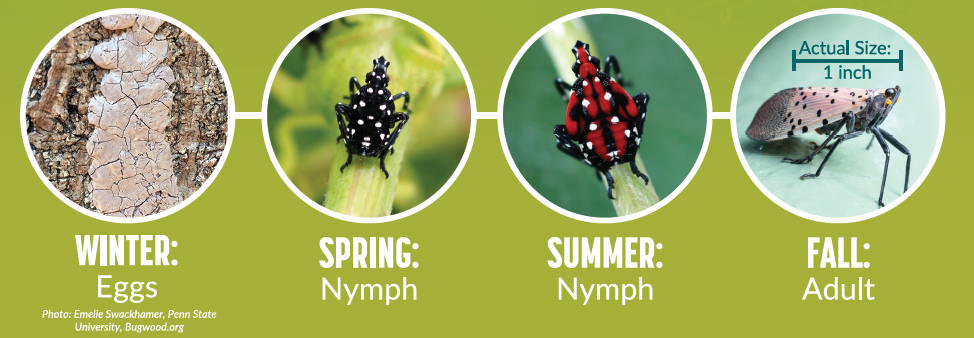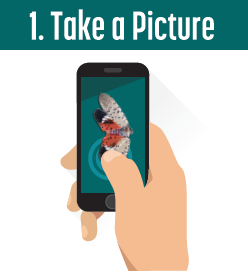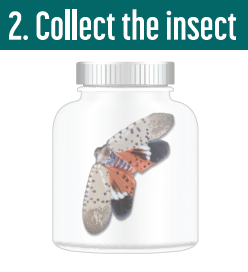Spotted Lanternfly
What is the Spotted Lanternfly?
The spotted lanternfly (SLF), Lycorma delicatula, is a large planthopper native to Asia. This insect feeds on the sap of over 70 plant species, including grape, apple, hops, oak, walnut, maple and ornamental plants. Tree of Heaven, another invasive species in Missouri, is a favored host of SLF.
SLF was first detected in the United States in Pennsylvania in 2014 and is suspected to have hitchhiked there on stone slab shipments from South Korea. Additional detections have been reported in a growing list of states.

Photo Credit: Pennsylvania Department of Agriculture
What is the risk?
This bad bug has the potential to damage our forests and food supply by feeding on trees and crop plants. The SLF is also a threat to recreation and tourism in our state.
How do they spread?
The SLF finds its way to new areas primarily by hitchhiking with humans. They lay their egg masses on any hard, smooth surface, including firewood, landscape materials, outdoor furniture, vehicles and more.
What is Missouri doing to guard against the Spotted Lanternfly?
Visual surveys are being conducted in areas where Tree of Heaven, Ailanthus altissima, is located and at companies that may receive imported goods. Because Tree of Heaven is the primary host of the spotted lanternfly, officials are on the look-out for stands of Tree of Heaven. Areas on public land close to shipping lanes, warehouses, industrial zones, rest stops, travel corridors, and ports are especially important.
Lifecycle Description
Spotted lanternflies go through five stages of growth after hatching from eggs. The first four stages are called nymphs. The tiny nymphs are initially black with white spots but eventually develop red areas on their bodies. Adults are about an inch long, are gray and black, and have hind wings with bright red patches. Adult spotted lanternflies are present from July through December. Egg masses of 30-50 eggs overwinter and hatch in the spring.

How can you help?
Early detection is key. If you think you have found SLF, follow these steps:



For More Information
Contact the Missouri Department of Agriculture’s State Survey Coordinator at 573-751-9334 or plantpest@mda.mo.gov
